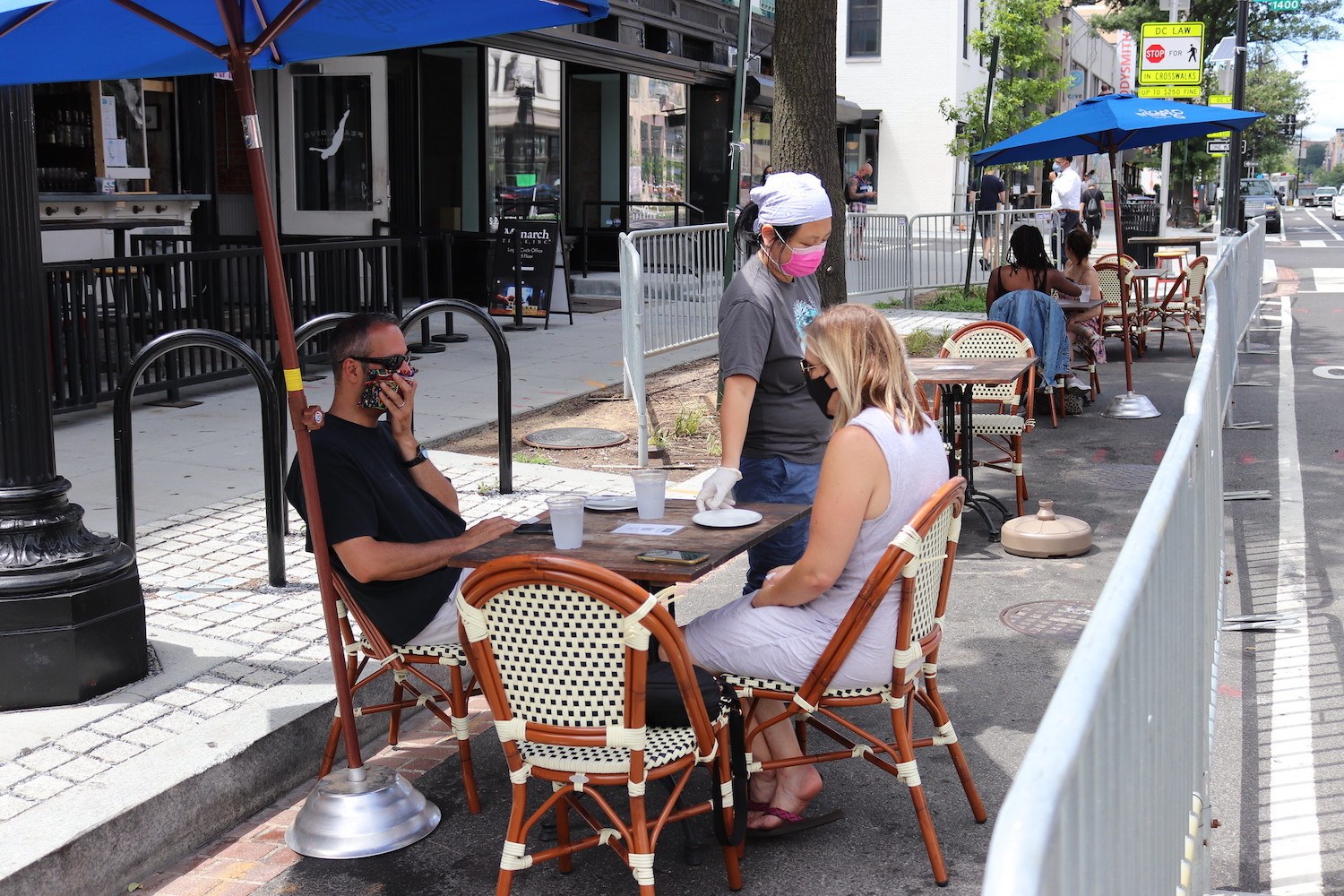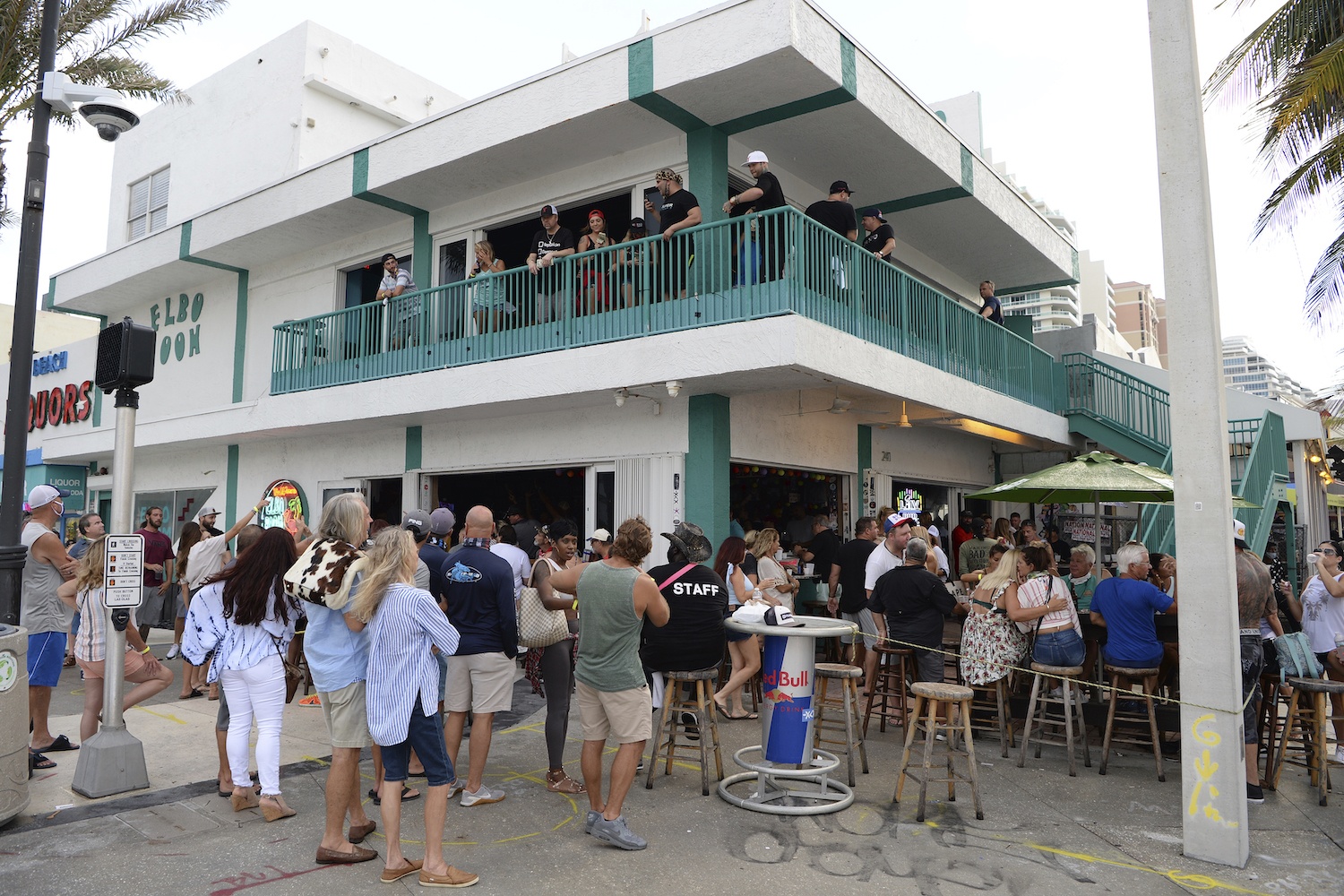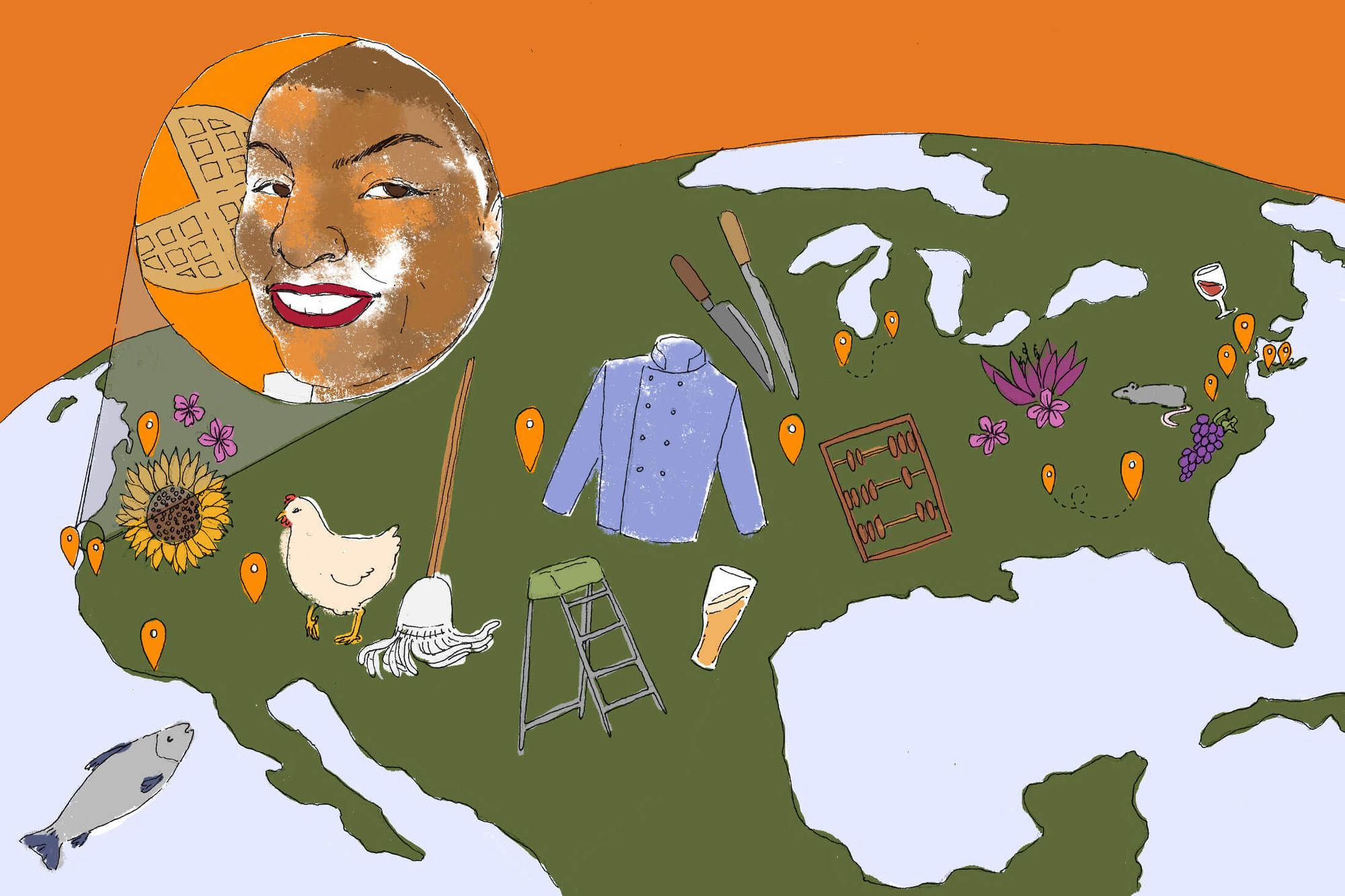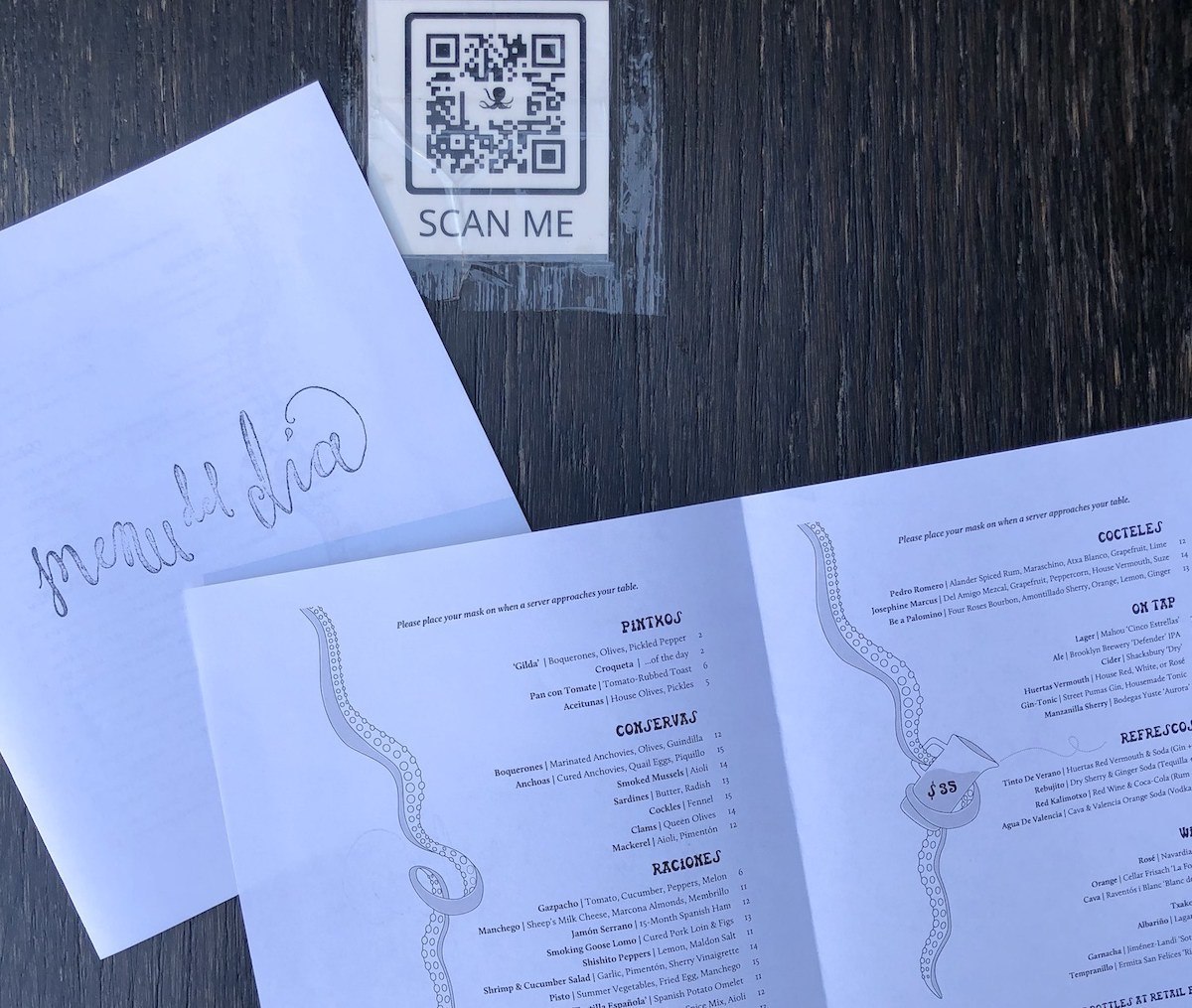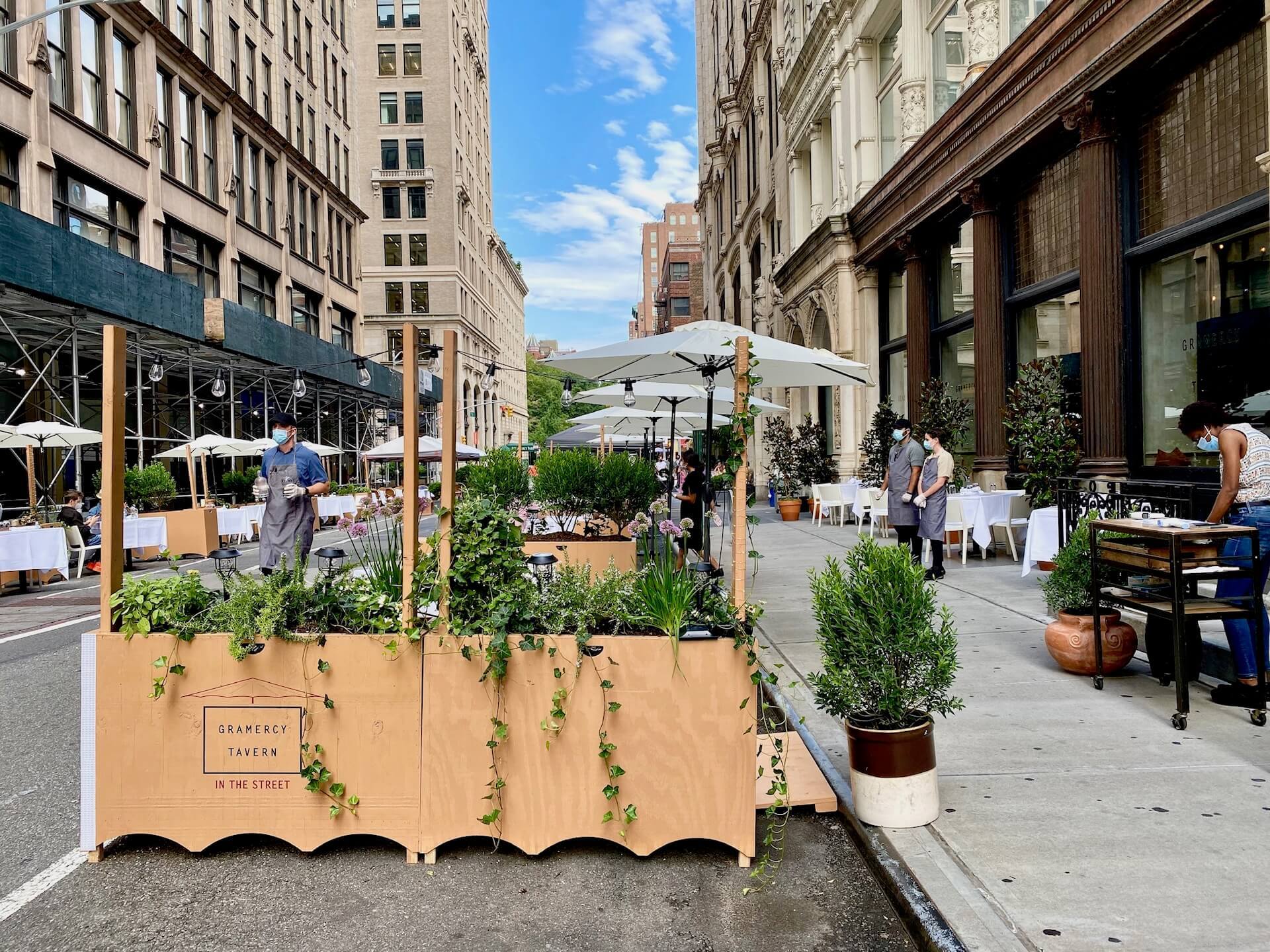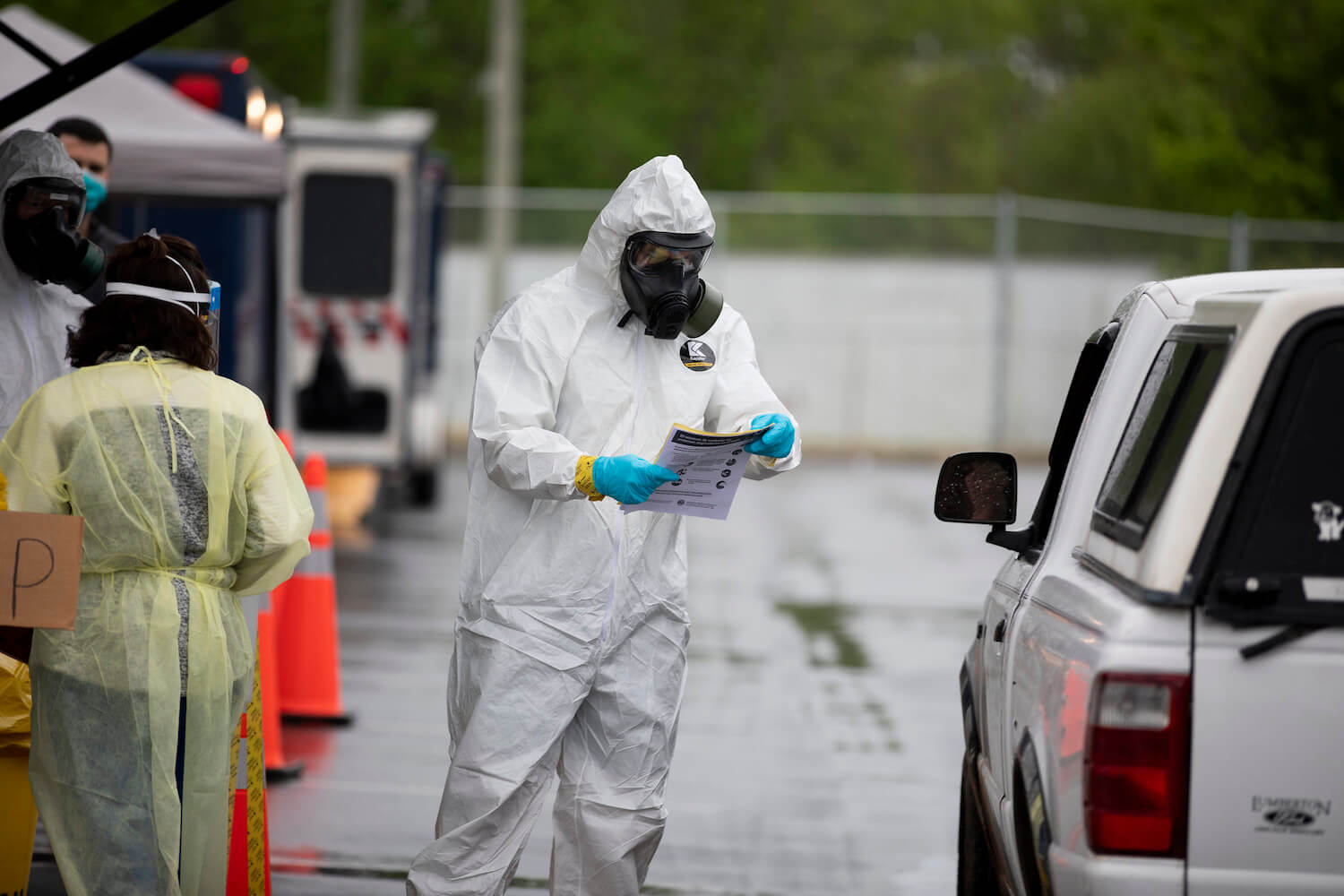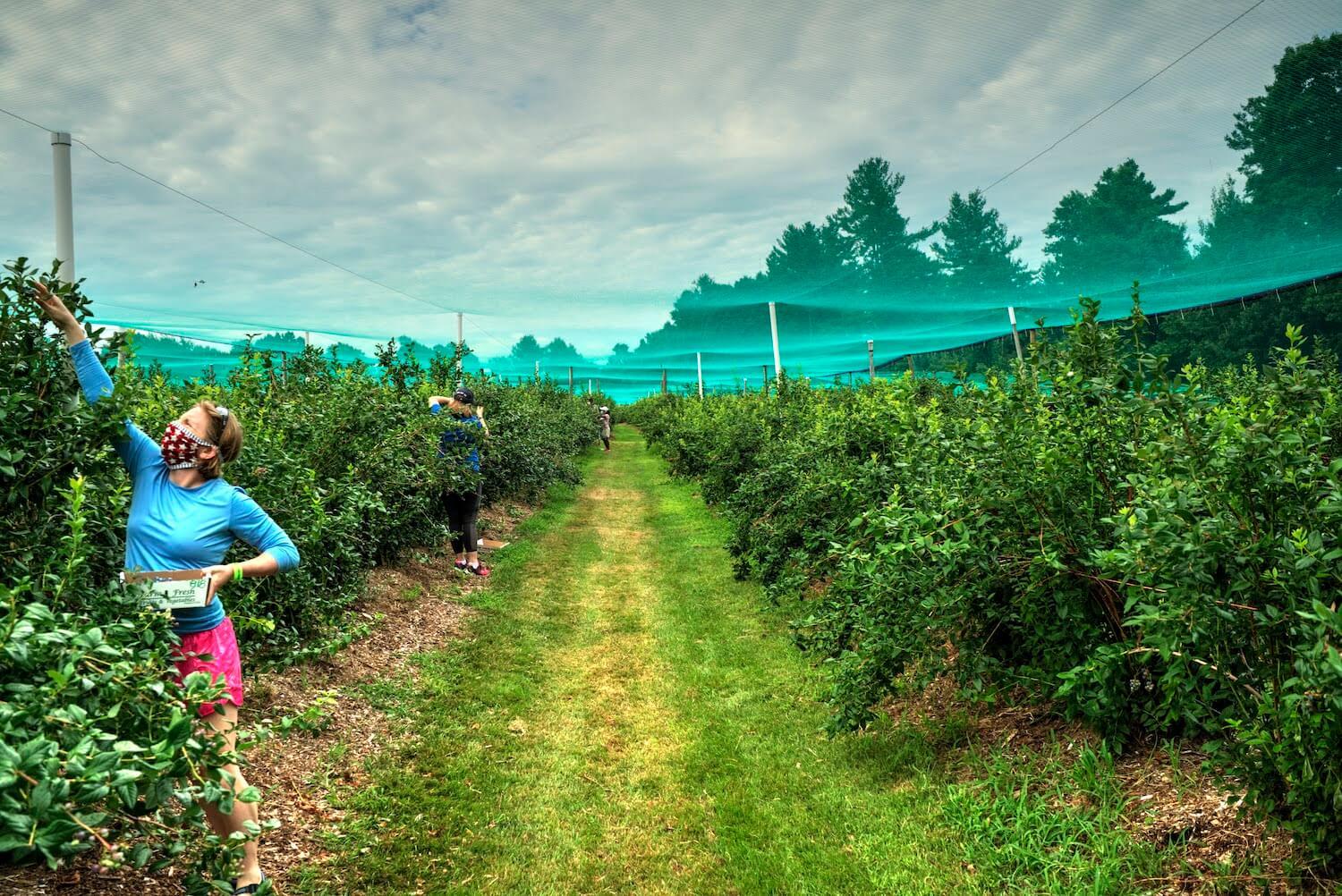The CDC has issued guidelines on how to deal with problem restaurant customers, but enforcement is taking a toll.
A hot dog at a stand in Stinson Beach, in northern California, can cost you an extra $500 if you don’t wear a mask—and up to $10,000 in fines for the restaurant, for not following Marin County health orders. Drive inland and you face an enforcement fork in the road: Indoor dining with a list of safety rules in San Francisco; no indoor dining at all in nearby Oakland.
Almost seven months after restaurants’ initial shutdown, safety is a spotty patchwork of policy and personal preference, inconsistent regulations or no rules at all, with everything subject to change. On the frontlines, responsible for enforcement, is an army of front-of-house workers—servers, bussers, hosts—suddenly responsible for the health of their guests and co-workers. The stress takes a toll: Larry Barton, a professor of crisis management and public safety at the University of Central Florida, runs a risk management consulting firm, and says that calls from food and beverage businesses have gone up 65 percent since March.
“It’s the highest I’ve seen in 31 years,” he said. “We’re in uncharted territory.” Barton blames the pandemic, the accompanying financial insecurity—and unstable work conditions, caused by conflicting guidelines and levels of enforcement.
Lauren Rauber, a 28-year-old server who up until two months ago worked at Barbaro, an Italian restaurant in the Hudson Valley in upstate New York, figured she had to speak up when a customer headed inside, maskless, to use the restroom. “He said, ‘Oh, yeah,’ and grabbed my napkin off my server station outside and put it on his face,” Rauber said. “I said, ‘Hey you need a real mask,’ and he tossed his napkin on to a clean pile of plates and waited for the manager to get a mask for him.”
“There’s not a lot of people here who believe in using masks, which is unfortunate. All our staff have to wear them, but that’s it.”
And several men have asked her to take off her mask, so they can “See what I really look like,” said Rauber, “to understand who they are really talking to.”
Rauber said she witnessed harassment between customers as well. When two women eating outside with a baby told another customer to wear his mask properly, he started to yell. “He was getting into the mother’s face without a mask on,” Rauber said. “My manager physically had to get in between them to break it up.”
In the end, the stress did her in. Rauber left her job for one at a hotel where she feels safer.
Stephanie Jensen, a 28-year-old server at a bar and grill in Brainerd, Minnesota, faces a different problem: She doesn’t have to ask customers to put on their masks because her employer isn’t enforcing Minnesota’s policy, which is to require masks except when a customer is eating or drinking. Minnesota also caps indoor occupancy at 50 percent; the restaurant she works at doesn’t.
“It’s a small town and it’s a pretty conservative town,” said Jensen, “so there’s not a lot of people here who believe in using masks, which is unfortunate. All our staff have to wear them, but that’s it.”
So she goes to work in tight quarters, surrounded by unmasked guests, and hopes she’ll stay lucky. “I have a son, and my parents are both pretty old and high-risk,” she said. “I don’t know if I’m going to get exposed, but at the same time I have to pay my bills. So it’s frustrating.”
Defining what qualifies as safe practice continues to be an elusive goal. The CDC offers guidelines that recommend new security systems, safe areas for employees, and advertised policies on a restaurant’s website—and encourages employees to ask guests to follow protocols but not to argue with someone who gets angry or threatens violence. At that point, the CDC advises that they find a supervisor or call 911.
And ServSafe, the food safety training arm of the National Restaurant Association, now offers a free 10-minute de-escalation training video, which employees can access at no charge, in which the narrator tells servers to stay calm, maintain a soft voice, and watch for warning signs like a clenched fist.
“It creates a bond between you and them because you’re both having to deal with this awful situation, even if inside you’re, like, ‘Hey, asshole, wear the goddamn mask.’”
But de-escalation trainer Lauren Taylor, the director of Safe Bars, a non-profit that trains hospitality workers, discourages calling the police. Taylor, who has provided self-defense training since 1986, believes that with proper tools and vocabulary a server can defuse a tense situation. In August Safe Bars started offering a new two-hour training focused on workplace issues; so far, 70 front-of-house workers have taken the course.
Taylor suggests creating a bond with the customer, even if it means telling a lie. A customer who refuses to wear a mask? “Say, ‘I’m really sorry, I don’t make the decisions, but could you just wear it, because if you don’t I’m really going to get in trouble,’” said Taylor. “It creates a bond between you and them because you’re both having to deal with this awful situation, even if inside you’re, like, ‘Hey, asshole, wear the goddamn mask.’”
Barton, whose most recent book is “The Violent Person at Work: The Ultimate Guide to Identifying Dangerous Persons,” agrees that language is key.
“Somebody is in an Italian restaurant and they’re really just railing on this person, and the person, to de-escalate, says, ‘Listen, I agree with you. The order was late,’” said Barton. “The angry patron might shout, ‘Oh, even you agree with me.”
Better, he said, to try empathy: Instead of “I agree,” say, “I understand what you’re saying.”
In return, he hopes customers will acknowledge the strain employees are under, with a time-honored tradition: “I hope customers will be very generous with their tips,” he said, “and that they will be patient with people who have been largely out of work for several months.”
Employees of large chains find that their stress level, and their own safety, can be a function of geography. Dickey’s Barbecue Pit, a Texas-based chain, asks each of its 500 locations to comply with local regulations, unlike McDonalds and Starbucks, which require masks nationwide, regardless of local rules.
And then there’s the unpredictability of the virus itself: The rules are only true until they aren’t anymore, because rising infection rates can alter reality on a day’s notice. San Francisco’s 12-page dining guide warns, “It is possible—and even likely—that case numbers will surge during the Fall,” causing another indoor-dining shutdown. And New York City, which just returned to indoor dining at 25 percent capacity, has seen an uptick in Covid-19 cases in the past week that could threaten its new plan as well.
“If upon the third time they either do not comply or refuse, we will ask the guest to leave. If they refuse to leave the premises, we will then call the police.”
But other locations have re-opened without contingencies, even as their numbers spike: South Dakota allows full-occupancy indoor dining, and Montana is at 75 percent capacity despite increasing numbers of cases. Both Vermont, the state with the lowest per capita numbers, and Wisconsin, a red-zone state at the opposite end of the spectrum, allow limited indoor dining with tables six feet apart.
Employee protections vary as well, with some states relying on temperature checks even though they have been shown to be unreliable indicators of disease, as the nation’s top infectious disease expert, Dr. Anthony Fauci, confirmed.
Major cities coming late to indoor dining tend to set the bar high, which means more protection for employees and customers, but more opportunity for challenging interactions, as well. Mark Fox, who owns four restaurants in New York City, has decided to take a hard line, in great part to protect his businesses from further losses.
“We in no way want to be complicit in an uptick in transmission,” he said. “It is a concern that restaurants can be a breeding ground.”
Fox is doing everything he can think of: temperature checks of all employees and guests, floor markers to define distance, hand sanitizing stations, and signs on each table reminding diners to keep their masks on if they aren’t eating. If anyone in a party has a fever, the whole party will be turned away at the door.
So far he hasn’t encountered a resistant guest, but he has a plan in place if it happens, one that spares front-of-house workers a protracted debate.
“If they refused or did not comply we would ask a second time,” he said. “If upon the third time they either do not comply or refuse, we will ask the guest to leave. If they refuse to leave the premises, we will then call the police.”
